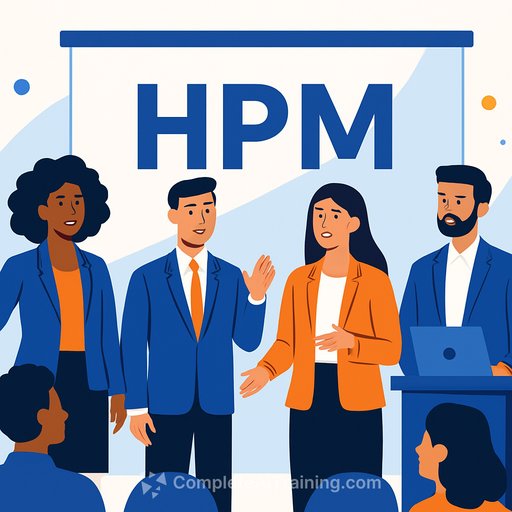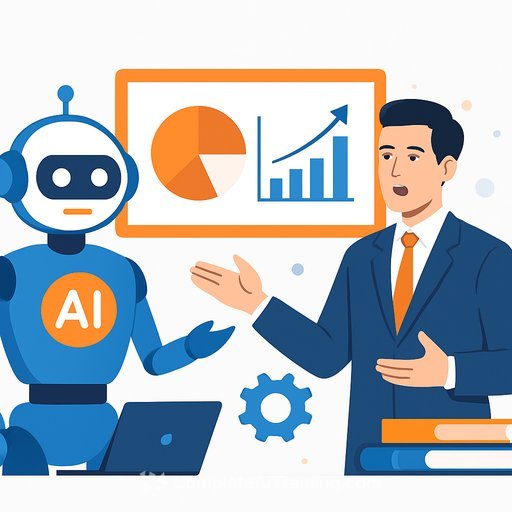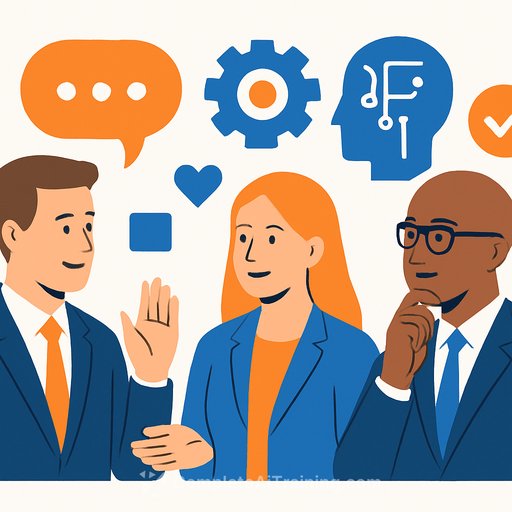Employees are adopting AI faster than companies are ready - here's how HR can close the gap
UK employees aren't waiting for permission. According to new research, 78% use generative AI weekly and 40% use it daily, but only 24% have received training on how to work with it. That's the gap HR must close.
Executives see the issue too: 52% cite skills and training as the biggest barrier to scaling AI. Employees aren't resisting change - 9 in 10 say they're willing to learn - but 53% say accountability is unclear when AI gets something wrong.
Why this matters for HR
The research points to a simple idea: the next stage is co-learning - people and AI learning together, in real time. Organisations that get the conditions right report 5x higher engagement, 4x faster skill development, 8x more trust in leadership, and are 1.4x more likely to see profitability growth.
Nearly half of UK organisations (47%) have already onboarded AI agents into defined roles, especially in employee learning and coaching (16%), workflow management (14%), and customer service (13%). And 75% expect humans to work alongside agents across daily operations within three years.
What leaders are saying
"Workers are enthusiastic about AI, but the training structures around them haven't caught up," said Joe Hildebrand, managing director, talent and organisation at Accenture UK&I. "Leaders need to move beyond bolt-on training programmes and start creating environments where people and intelligent agents learn together in real time."
He added: "Encourage curiosity, weave learning into everyday work, and hardwire trust through clear governance. Make sure your AI tools align with how people actually work on the ground."
Practical moves HR can make this quarter
- Publish an AI use policy: Clarify approved tools, acceptable use, data handling, and who's accountable for outcomes. Include a simple decision tree for escalation and review. See the ICO guidance on AI and data protection.
- Stand up co-learning: Pair short micro-lessons with on-the-job AI use. Example: 15-minute "how to prompt for X" before a real task, followed by a 5-minute review of results and risks.
- Define AI agent roles: Start with high-fit use cases already gaining traction - learning/coaching, workflow orchestration, customer support triage. Write role charters that include scope, inputs/outputs, guardrails, and human oversight points.
- Measure the right signals: Track adoption, task cycle time, error rates, employee confidence, and manager workload shifts. Review weekly in standups; iterate tools and training monthly.
- Create accountability by design: Use a simple RACI for AI-assisted work. Human approves; AI drafts. Log prompts and decisions for audit. Add a lightweight incident review for AI-related errors.
- Upskill managers first: Equip them to coach on prompts, set expectations on privacy and quality, and model safe use. If managers lag, the rest of the org stalls.
A focused 90-day plan
- Days 1-30: Policy draft, tool whitelist, data guardrails, pilot team selection, baseline metrics.
- Days 31-60: Launch manager bootcamps and co-learning sprints; deploy two AI agent roles with clear oversight.
- Days 61-90: Expand pilots, publish impact metrics, refine governance, build an internal gallery of approved prompts and playbooks.
Common risks to get ahead of
- Shadow AI: Employees using unapproved tools. Reduce it with clear guidance, safe defaults, and fast approvals.
- Data leakage: Block uploads of sensitive data; use redaction and private deployments where needed.
- Bias and consistency: Standardise prompts and review outputs against policy. Rotate human reviewers for critical tasks.
- Role confusion: Make it explicit what the AI drafts and what the human owns. Accountability should never be ambiguous.
Where to build capability next
Focus on the work, not the hype. Start with repeatable knowledge tasks, customer touchpoints, and internal enablement. Then scale what proves faster, safer, and measurably better.
If you need structured pathways for HR teams, explore AI courses by job role to accelerate adoption without guesswork.
Bottom line for HR
Employees already moved. HR's edge is to create the conditions for co-learning, clear accountability, and measurable improvement. Do that, and AI becomes part of daily work - not another side project competing for attention.
Your membership also unlocks:






